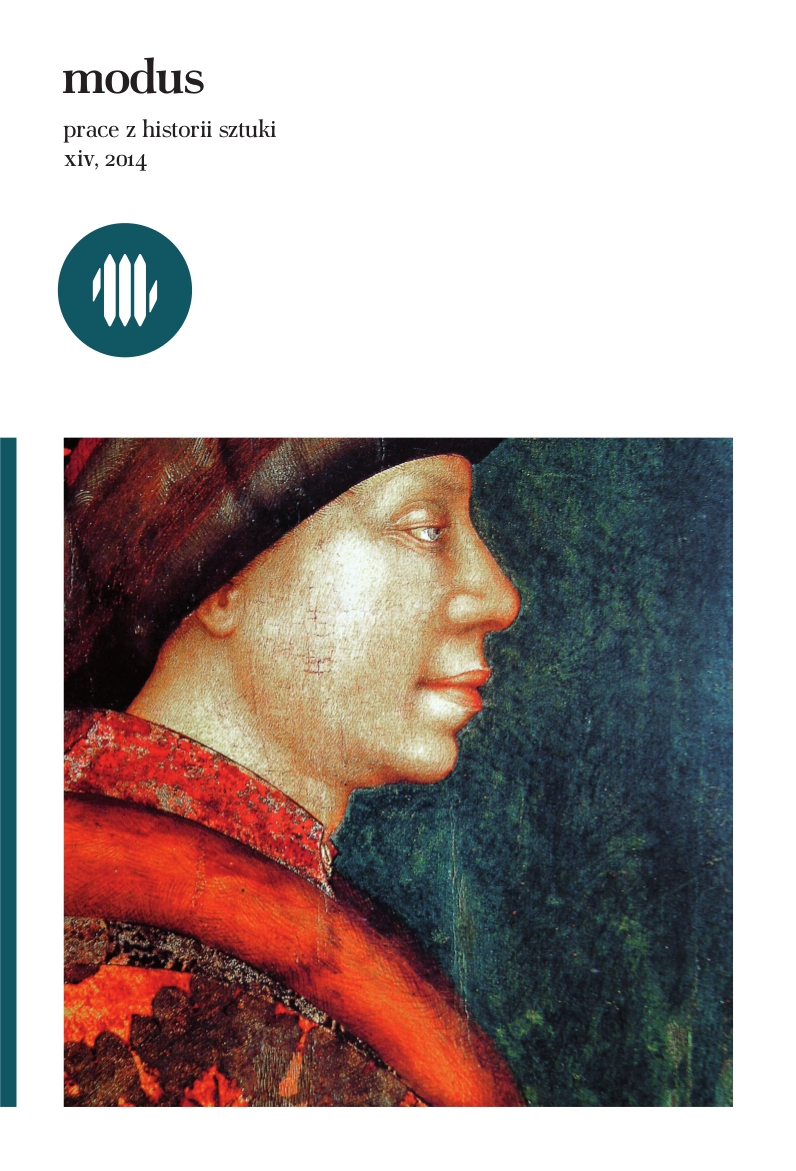Wiedeńska Akademie der bildenden Kunste a krakowska Szkoła Rysunku i Malarstwa przy Uniwersytecie Jagiellońskim (1818-1833)
The Akademie der bildenden Kunste in Vienna and the School of Drawing and Painting at the Jagiellonian University in Cracow between 1818 and 1833
Author(s): Zbigniew MichalczykSubject(s): Fine Arts / Performing Arts, Visual Arts, Sociology of Art
Published by: Wydawnictwo Uniwersytetu Jagiellońskiego
Keywords: Akademie der bildenden Kunste in Vienna; School of Drawing and Painting at the Jagiellonian University in Cracow; Drawing;painting;
Summary/Abstract: The Vienna Academy of Fine Arts did not play as important a role in thehistory of Polish painting and sculpture as other European centres of artistic training, especially Munich, Saint Petersburg and Paris. Yet, the importance of the Danubian Capitalshould not be underestimated, because some of the graduates of its Academy had beeninstrumental in introducing significant changes that shaped Polish art at the end of theeighteenth, and especially in the first half of the following century. What is morę, formany of them the training received at the Vienna Academy was of crucial importancefor their artistic activities. And the meaning of the last concept should be understood inmuch broader terms, embracing not only the creation of works of art, but also teaching,in the period when Polish university-level schools for painters and sculptors were stillin their swaddling clothes.The aim of the present study is to examine the role that the contacts between Cracowand Vienna played in the formation of the School of Drawing and Painting at the JagiellonianUniversity. The attracting force of Vienna as an artistic centre, at the turn of thenineteenth century, resulted obviously from the city s geographical location and politicalconditioning, but also from the fact that the local Academy was at that time in a periodof intensive development.Furthermore, the present considerations give an opportunity to at least partially Supplement biographical information about professors and teachers who were active at botheducational institutions. Józef Brodowski, in whose successive syllabi (from 1820,1833 and1836) one can identify direct references to Viennese practice, should be seen as a championof Viennese academic tradition in Cracow. Brodowski was also responsible for purchasingdrawings by contemporary Austrian painters, which were intended to serve as modelsto be copied by students. The models prepared by him imitated the manner of HeinrichFriedrich Fiiger. Both professors of sculpture, Josef Riedlinger (a long-time corrector ofsculpture in Vienna) and Josef Schmelzer (who could boast a substantial output of worksand, before his arrival in Cracow, was active in Vienna, Hungary and Transylvania) wereartists trained in the Vienna Academy. Anton Schimser, a sculptor and one of the mostserious candidates for the professorship in sculpture at the Cracow school (in a Competition for this post, eventually won by Jakub Tatarkiewicz, in 1833) had a similar background, asfar as artistic training was concerned, to that of Schmelzer. Also Jan Nepomucen Bizański,who taught drawing at the Cracow school using a Viennese textbook by Johann MartinFischer, had studied in Vienna for a while. While discussing the connections of the teaching Staff of the School of Drawingand Painting with the Vienna Academy, a mention has to be madę also of the teachers working in the Saint Annes and Saint Barbaras secondary schools, namely: Antoni Giziński, Piotr Wyszkowski, Josef Sonntag, and Jan Nepomucen Głowacki. Both theseschools were under administration of the Jagiellonian University, but what is important is the fact that they pursued a curriculum similar to that used in the early years of theSchool of Fine Arts in Cracow. It was most likely in Vienna that Wyszkowski familiarisedhimself with lithography, of which he was the first user in Cracow, whereas Głowacki isconsidered to be one of the pioneers of Polish mountain landscape painting and at thesame time, a follower of Franz Steinfeld, the most eminent landscapist in Vienna of theBiedermeier period.Finally, it was from the Austrian Capital that a set of teaching aids was brought - notonly the aforementioned drawings of Viennese painters, but also prints, and especiallya sizeable collection of ancient sculpture in plaster casts. The present author has managed to reconstruct in detail the story behind the efforts to secure this enormous purchase,in which originally involved were Józef Brodowski and Josef Riedlinger, and subseąuentlyalso Josef Schmelzer. The casts, brought to Cracow in 1826, had been madę in the workshop of the Vienna Academy of Fine Arts (Kaiserliche Konigliche Akademische Kunsthandlung).
Journal: Modus. Prace z historii sztuki
- Issue Year: 2014
- Issue No: 14
- Page Range: 181-238
- Page Count: 58
- Language: Polish

